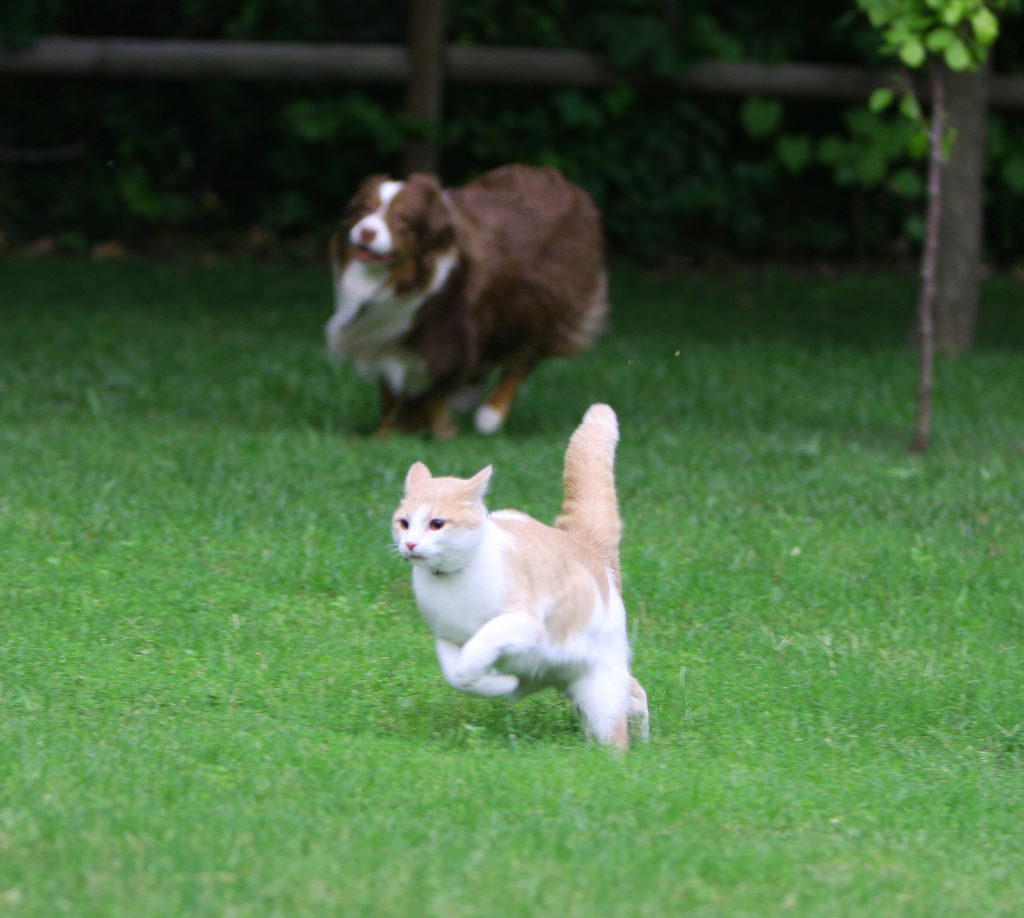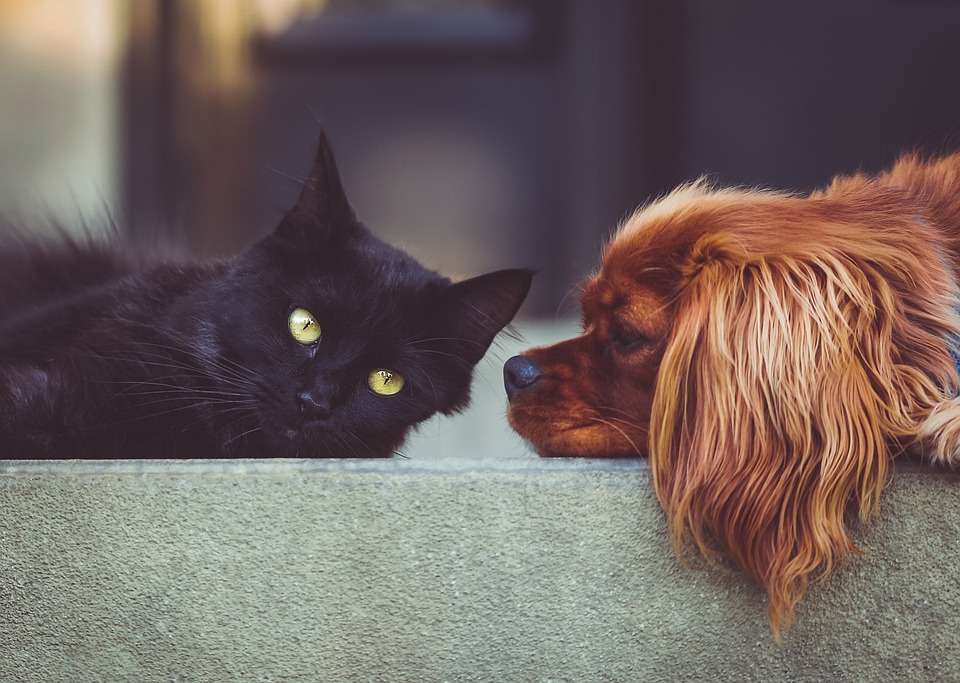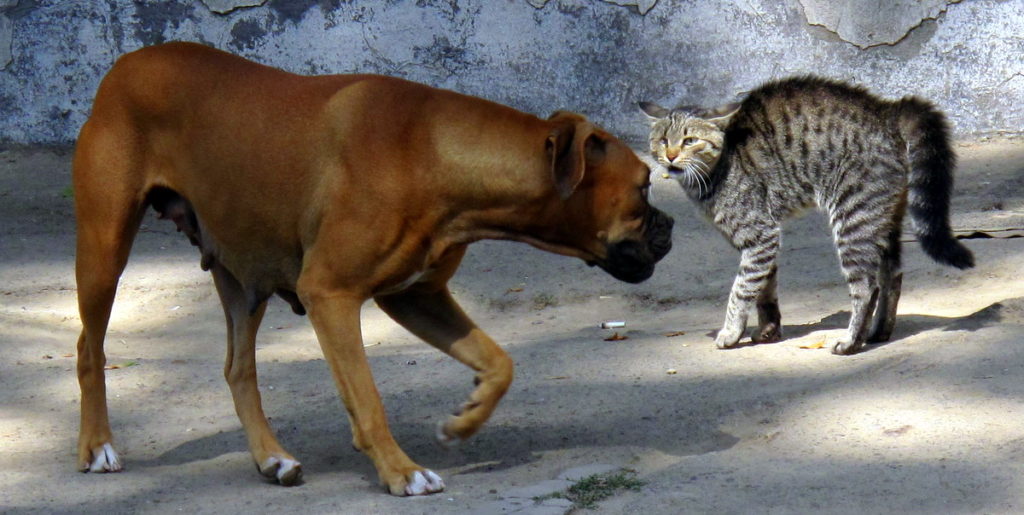Why do dogs chase cats
 The psychological reason is simple. It is the dog’s natural prey drive instinct. Some dogs will chase cats, and others won’t. If you have a hunting, working or terrier breed or mix, there’s a good chance they will chase cats, because they have a stronger drive to do so.
The psychological reason is simple. It is the dog’s natural prey drive instinct. Some dogs will chase cats, and others won’t. If you have a hunting, working or terrier breed or mix, there’s a good chance they will chase cats, because they have a stronger drive to do so.
Terriers and earth dogs such as Dachshunds were bred to hunt small animals such as rats. Working breeds such as herding dogs were bred to round up other animals. Hunting dogs were bred to hunt other animals.
With breeds such as these and all dogs, in general, it is important to ensure that they receive adequate exercise both physical and mental. This aids to release pent-up energy that can lead to chasing behavior and problems related to boredom. See here for ideas for providing exercise and mental enrichment for your dog.
The first thing to establish is what is the dogs intent when chasing a cat.
- it is your own cat and it is just a fun game
- it is your own cat and they intend harm to the cat
- your dog is chasing other cats and it is for fun
- your dog is chasing other cats with the intent to kill
Once you have established which category your dog fits into you can look at strategies and techniques to condition the behavior out of them. You can not remove a dog’s natural prey instinct, but you can redirect and condition the behavior you want.
Risks of cat chasing behavior
Cat chasing is a behavior you don’t want your dog to engage in. There can be some serious danger to both your dog and the cat.
It is not uncommon for a dog to lose an eye from a cat scratch. Also, if your dog chases a cat on to the road there is the high risk that one of them is hit by a car. Not to mention that you and your dog can get into serious trouble with the dog ranger.
How to train a dog to like cats
If you have a cat and are bringing a dog into the home, how they are introduced will set the tone for the future relationship between them.
 If you’re bringing a new puppy home, a good way to introduce them is to crate your puppy and bring the cat into the room the crate is in. Sit next to the crate with your cat in your arms. You want both animals to be in a calm state of mind. If either is reacting simply release the cat and allow them to move around the room. If your puppy starts to whine or barks at the cat speak to them in a calm and monotone voice to calm them down.
If you’re bringing a new puppy home, a good way to introduce them is to crate your puppy and bring the cat into the room the crate is in. Sit next to the crate with your cat in your arms. You want both animals to be in a calm state of mind. If either is reacting simply release the cat and allow them to move around the room. If your puppy starts to whine or barks at the cat speak to them in a calm and monotone voice to calm them down.
Once your puppy is calm in their crate in the presence of the cat you can put them on a leash and repeat the exercise. If your puppy becomes too excited or reacts to the cat, simply walk them away to another area until they are in a calm state of mind again. If your dog rushes the cat or tugs on the leash, tell them “no”. It is important that the cat is not a big deal to the dog.
Remember to reward your puppy or dog for remaining in a calm state of mind when around the cat. Read “How to reward a dog” for tips.
How to get a dog to stop chasing cats
To avoid a chase starting your dog needs to be redirected as soon as the behavior starts and ideally as soon as he starts to get aroused. makes any indication that the chase is about to begin. The faster you can cut them off and redirect their behavior, the more successful you will be long term.
Signs and trigger to watch out for include;
Beware of signs of early arousal such as whining, pacing or they become agitated.
Watch for them staring at the cat. As soon as they are staring in the direction of a cat call get their attention. Say their name or clap your hands or put them on a leash so you have control of them. Reward them for giving you their attention in that situation. You have successfully redirected them. As soon as the cat starts to run they will chase.
They need to be taught that another behavior will be more successful for them. At the same time they learn that you are not allowing them to practice the behavior you don’t want. In this case, chasing the cat. There is some inherent reward in the chase behavior. This can become very self-reinforcing. The more your dog does it, the more well-versed they will become. This can become very serious. So be consistent in redirection and correction of this behavior before it starts.
What to do if the chase has already begun
You need to correct them if they get fully into chase mode. and you have missed the chance to redirect them first. If they take off chasing, you need to be right after them, using your voice as a correction tool. You want them to be immediately aware they have made a bad choice in chasing the cat.
When you catch them, without emotion, put them on a leash and move them away from the direction of the cat. They need to know that chasing behavior has a serious consequence. Don’t use harsh punishment as this achieves nothing. Remove your dog from the situation and put them back into a calm state. Don’t stay angry with them. In a dogs mind, the situation is finished and they have moved on.
Work on developing a strong recall command and leave it command. This way, even if a chase does start you can stop it easily. Realistically, this takes lots of practice, especially under distraction. Stick with it and the results will be worth it.
How to stop dog aggression towards cats
If your dog fits into the category of having the intent to harm or kill a cat, this is a serious situation. Especially if they have killed a cat before. You can’t remove that natural prey instinct, only redirect it. I would highly recommend working with an experienced dog behaviorist as in this situation it would not be a quick or simple fix.
The best thing to do it to not have your dog in a situation where this could occur. Keep them on a leash at times that they are likely to come across a cat. Once they start to pursue the cats it is very different to stop them. If you are in a situation where the problem is that they are your dog and cat you may need to look at rehoming one of them.

In summary
Firstly you need to establish what category of cat chasing the behavior is. Is it fun and games for your dog or are they looking to kill the cat?
Remember, you can not remove the natural prey drive, but you can redirect it. Work on keeping your dog in a calm state when around cats. With time they will learn to completely ignore the cat or even become good friends.
In the case where you have a dog that is chasing with the intent of doing harm and to be aggressive towards the cat, I would recommend working with an experienced dog behaviorist. This behavior will be more difficult to change but it can be done.
Related Posts